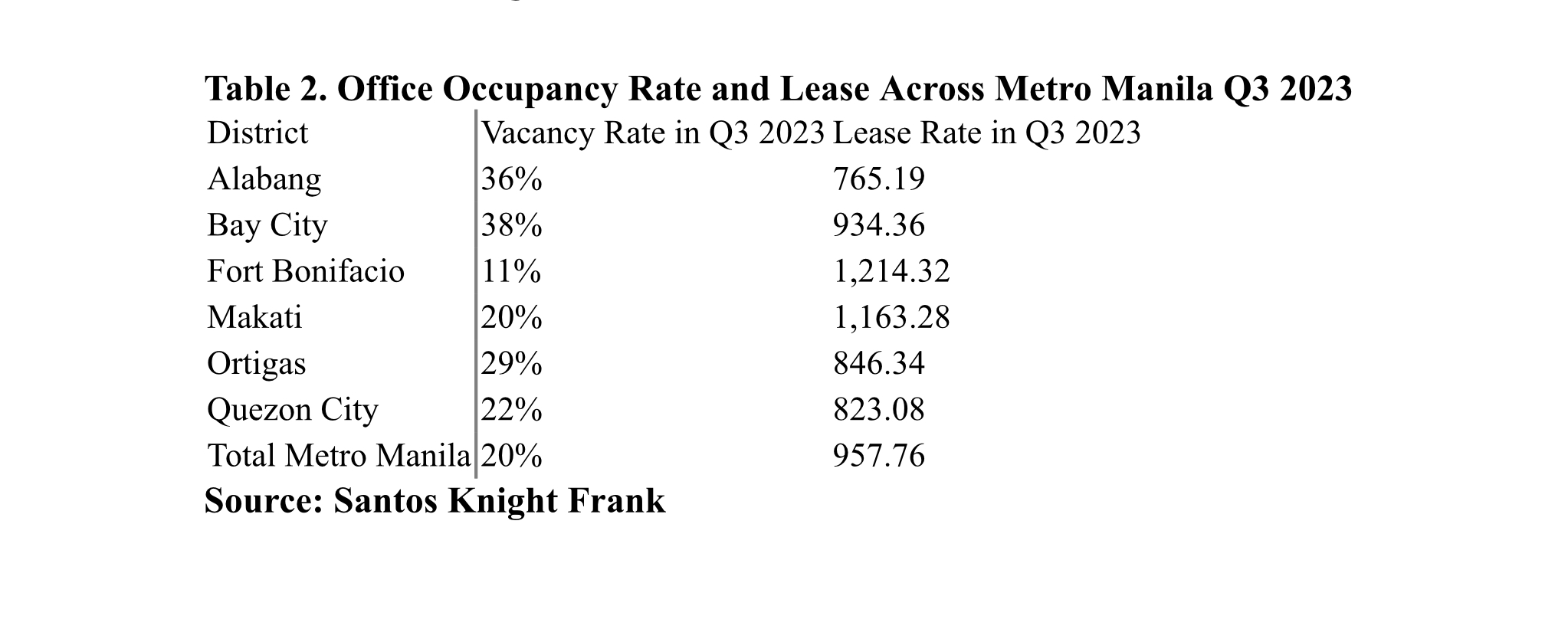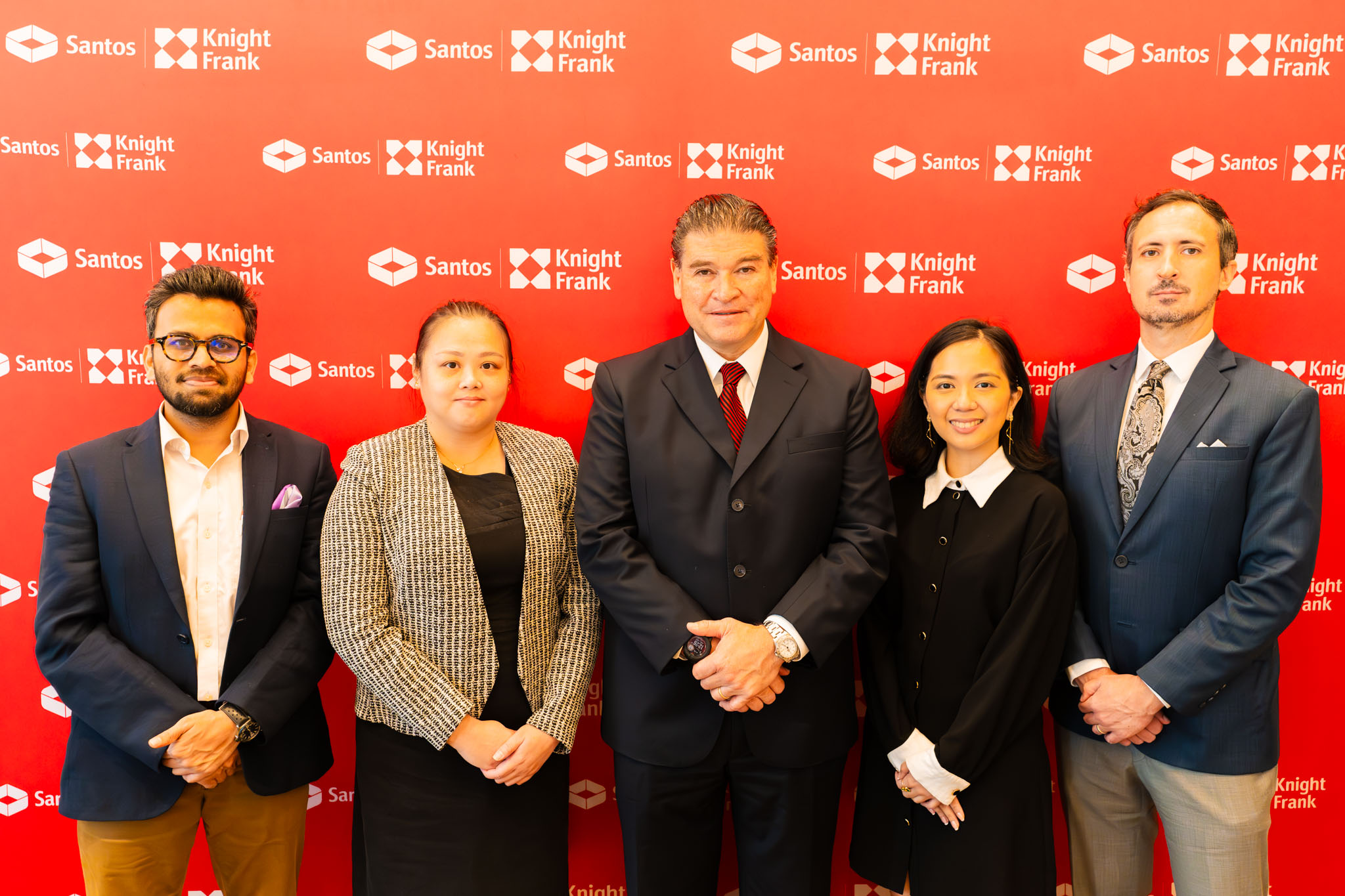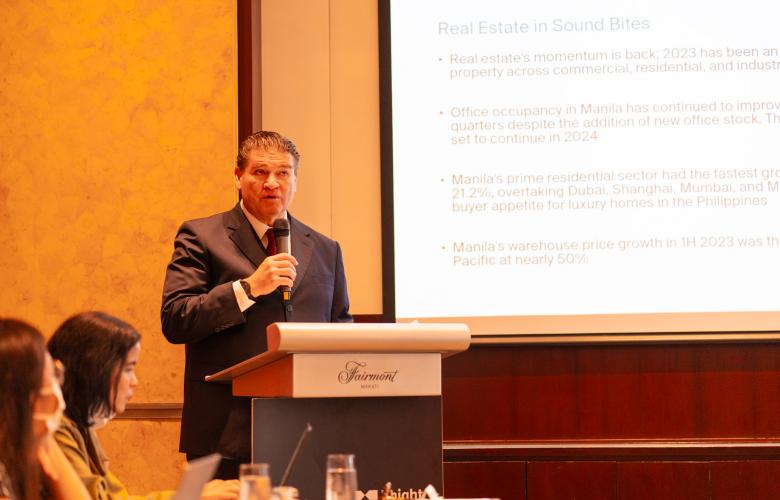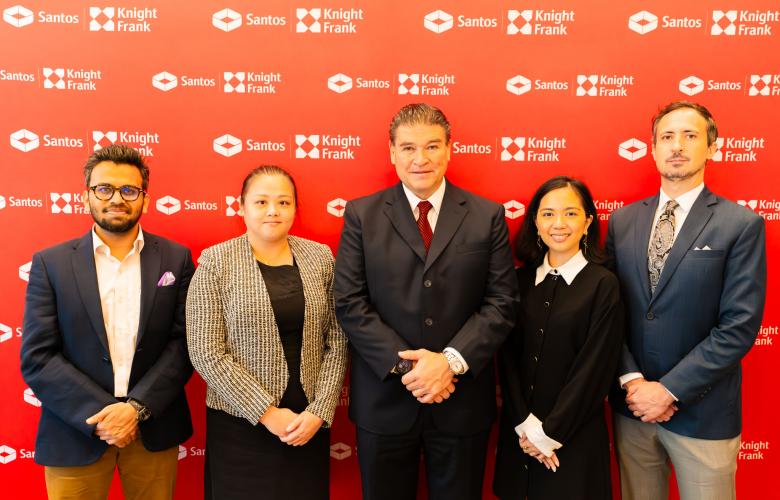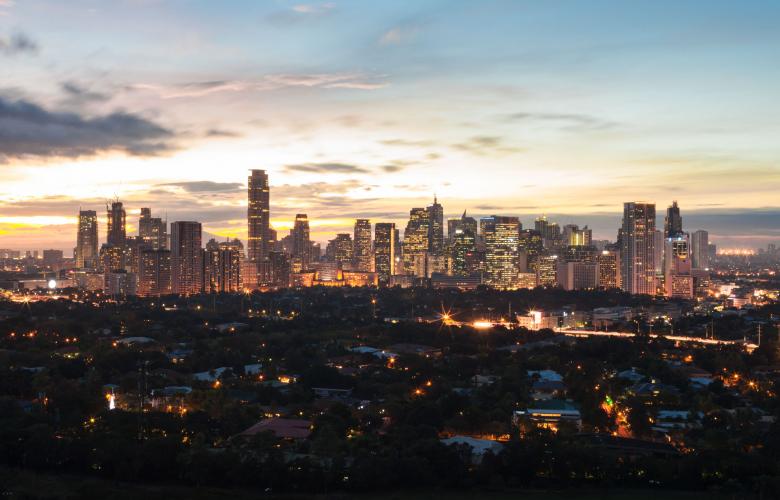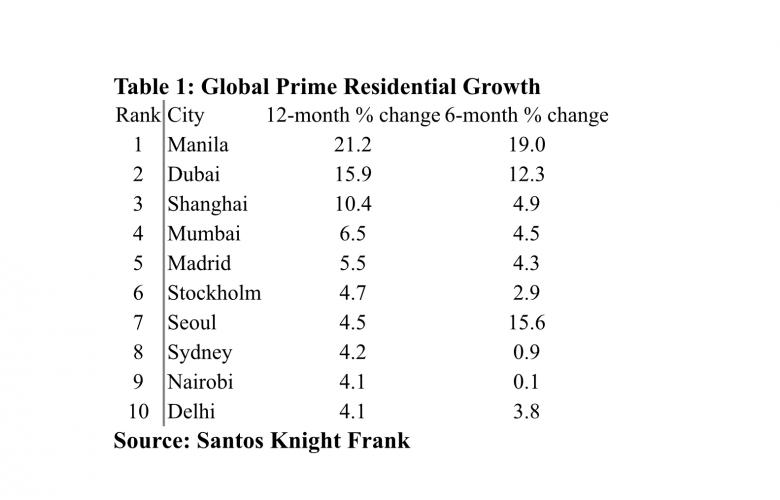The Philippine real estate sector is poised to conclude 2023 on a positive note. Post-COVID momentum continues with robust performance in both commercial and residential segments. This growth is fueled by the ongoing expansion of outsourcing and leasing activities in the country, as global inflationary pressures, cost-cutting measures, benefiting the Philippine real estate market.
Key Highlights:
- Manila leads the world in prime residential price growth at 21.2%
- Manila’s office occupancy increases to 80% following 3 quarters of consistent improvement from Q4 2022
- Leisure condos account for 48% of take up in Metro Luzon, signifying strong appetite for second homes
- 2,700 new hotel rooms expected by second half of 2024 in Metro Manila
- Manila warehouse rates increased by 30% in 1H 2023
Manila’s office occupancy rate is now at 80% after three quarters of consistent improvement from Q4 2022, when occupancy was at an all-time low of 75%. BGC and Makati continue to show the highest occupancy rates in Metro Manila at 89% and 80%, respectively.
“The office market has continued its road to recovery post-COVID. The increased demand from conventional office tenants and flexible office operators has significantly contributed to the upswing in commercial leasing requirements. We are expecting this momentum to continue in 2024,” explains Rick Santos, Chairman & CEO of Santos Knight Frank.
In the luxury residential sector, Manila has also led the price growth at 21.2% -- the fastest across the world according to Knight Frank’s Prime Global Cities Index.
“Strong investor confidence in the Philippines during the current Ferdinand R Marcos Jr. administration has buoyed the real estate market despite rising interest rates,” notes Santos.
He continues: “The luxury residential space is one of several sectors where we're seeing encouraging market activity. Pent-up demand for prime properties, the return of the residential leasing market, and the tight supply of developments have contributed to significant price appreciation especially in central business districts.”
GDP grew by 5.9% in Q3 this year, according to the government. The Asian Development Bank and the World Bank estimate the Philippines’ GDP to grow by 6% and 5.6%, respectively.
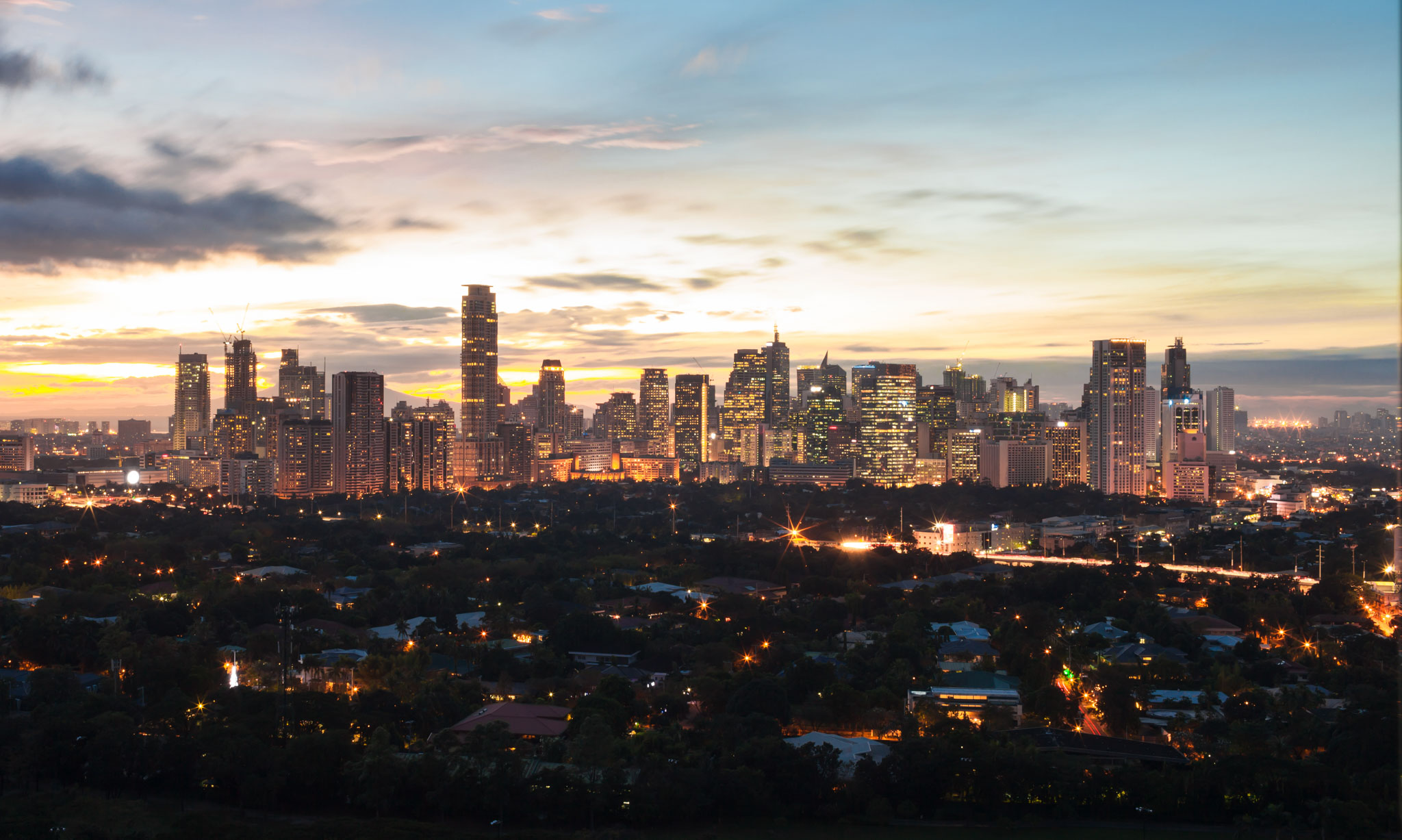
Meanwhile, total approved foreign investments in the Philippines experienced a notable increase in Q3 2024, rising to Php 27.3 billion from Php 13 billion in the same period the previous year. The sectors of Electronics, Manufacturing, and IT services garnered the most substantial investment commitments.
Office: The flight to quality and better experience
Post-pandemic, the choice between in-office work and a flexible remote model has been shaping the office market. There are signs that companies now are making long-term plans about their workplace setups.
According to (Y)our Space 2023 (Knight Frank and Cresa’s survey of 350 international multi-market businesses covering 10 million employees globally), 87% of firms said they intend to have an office-centric model (such as office-first, office-only, or hybrid) over the next 3 years.
When asked about the role of the office, respondents cited the physical workplace’s role in productivity, organizational culture, collaboration, and employee morale.
The survey further revealed the key amenities that occupiers understand their employees will be needing in the new office environment, with food and beverage offers ranking as the most preferred service/amenity with nearly 17% of responses. Occupiers also see the importance of facilities supporting mental wellbeing (14.4%) and gym facilities (12%).
In the Philippines, occupiers continue to prefer quality buildings that provide good value. Prime buildings’ vacancy rate (17%) continued to surpass average office buildings’ vacancy (20%) in Q3 2023, even when prime lease rates averaged at Php 1,244/sqm per month versus the market’s Php 980/sqm per month.
In general, Makati City emerged with the highest lease rate in the metropolis, with weighted average lease rate of Php 1,143/sqm per month. Fort Bonifacio ranked second at Php 1,098/sqm per month, followed by the Bay Area at Php 902/sqm per month.
Strong appetite for second homes is driving provincial condo sales
Since the pandemic, buyers have shown an increasing appetite for second homes. 41% of respondents in a survey by Santos Knight Frank in 2021 said they were eyeing to buy a second home, a higher proportion than Asia Pacific.
This trend is likely to continue in 2024, with local buyers acquiring leisure properties in Metro Luzon either for their end use or investment.
In fact, 41% of condominium units sold in Luzon were leisure developments as of Q3 2023. These leisure condominiums are typically located in tourist destinations such as Tagaytay, and Batangas
The remaining 59% of take up are traditional condominium units in urban areas in Luzon, an evidence of the growth of the vertical development market in cities in regions such as Cavite, Batangas, Laguna, and Pampanga.
Retail & logistics
In 2023, there has been a significant emergence of increased customer spending termed as "revenge spending". This trend in retail sales comes at the heels of the proliferation of flagship stores and roadside retail, with the likes of international brands (Gentle Monster, Skechers, Gucci, etc.), in areas such as Fort Bonifacio, Makati, and Quezon City.
Metro Manila’s retail stock sits at 5.1 million sqm. Taguig recorded the best-performing occupancy rate at 93% in Q3. Meanwhile, the Bay Area recorded the lowest at 85% caused by the addition of new 78,00 sqm of leasable area.
The positive performance of the retail market impacts the logistics sector. In the first half of 2023, Manila’s warehouse lease rates jumped by 30% -- the highest in Asia Pacific – driven by supply chain, e-commerce, and retail activities. END
Table 1: Global Prime Residential Growth
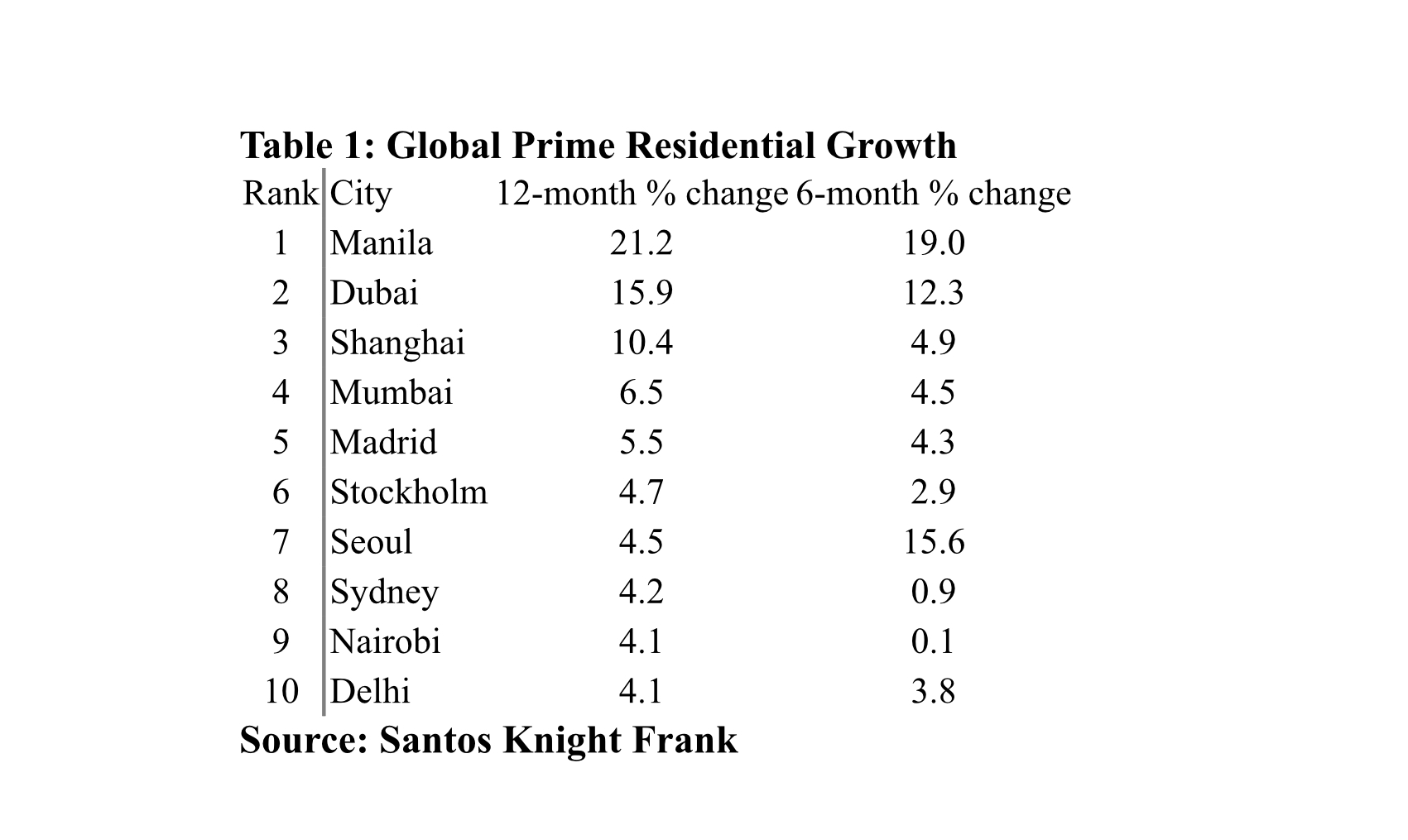
Table 2. Office Occupancy Rate and Lease Across Metro Manila Q3 2023
